Featured Image
Hello everyone,
“Educational” is a very wide spanning term – what I feel as a grade 5/6 teacher in a community is relevant and useful is WORLDS away from what I would have chosen last year, teaching grade 2/3 in a more affluent community. What one person deems educational, another can find childish and not worth the time. Some apps claim one thing and then you download them and it’s something completely different – especially in the context of school. Also, my main question is – are they worth the time we invest in them in the classroom? When I started digging around looking for curated lists of educational apps I noticed most websites were put out by sites such as goodhousekeeping.com, savymom.ca, whatmomslove.com, and bestproducts.com.  Not that these aren’t necessarily trusted sites, but I do question what authority some sites have to put out a list of educational apps when they are not affiliated with the educational world in a teaching context as that is my lens. I value what parents think, I often do value and read reviews of larger companies – however, I don’t know if I am ready to set up my classroom technology time around their opinions. Image Credit Holly
Not that these aren’t necessarily trusted sites, but I do question what authority some sites have to put out a list of educational apps when they are not affiliated with the educational world in a teaching context as that is my lens. I value what parents think, I often do value and read reviews of larger companies – however, I don’t know if I am ready to set up my classroom technology time around their opinions. Image Credit Holly
I started by exploring the top 10 list of a website I recognized, Common Sense Media. Common Sense Media claims to help parents and teachers by vetting technology so families and teachers can feel good about what they use with their kids. They claim to support education by “empowering the next generation of digital citizens”. They have a digital citizenship curriculum and say, “Schools everywhere rely on our free curriculum, expert advice, and edtech ratings to help kids thrive.” Sounds like something I would want to be a part of…well, I tracked down the “Best Apps for Kids” list and chose the “Big Kids” section for kids aged 8-9 as those were the closest age level to my class, and truly, around what most are functioning at, if not lower. Another piece I loved about the Common Sense Media site was that they also took time to break down apps and sites into categories, offer reviews, and even an always updating “Top Picks” list. Along the side of the app reviews there is also suggestions for how to integrate the topic into your class, STEM videos and teaching ideas. Overall, I was quite happy once I starting to dig through.
- Book Creator 6. The Social Express II
- Flow Free: Bridges 7. Stack the States
- INKS 8. Threes!
- Marvel Hero Tales 9. Toca Hair Salon Me
- Monument Valley 2 10. Zoombinis
The next site I chose to look through was Elearning Industry. They claim to be, “a network-based media and publishing company founded in 2012. It is the largest online community of eLearning professionals in the industry, and was created first and foremost as a knowledge-sharing platform to help eLearning professionals and instructional designers connect in a safe online community where they can stay up to date with the latest industry news and technologies, and find projects or jobs.” Although I didn’t recognize this site, it titled their list, “Top 10 educational apps for kids” and I felt like that was missing from Common Sense Media.
- Class Dojo 6. Science 360
- Duolingo 7. Crossword Puzzles
- Dragon Box 8. Flow Free
- Quick Math 9. Spelling Stage
- Youtube Kids 10. My Molecularium
 I now had 20 apps to look through and to be honest, I had only heard of 3 of them, Dojo, Duolingo and Book Creator. This didn’t make me nervous, it just made me question some of the apps I have been using in my classroom as only one of them appeared on either of these lists, and many of the other curated lists I had explored didn’t feature any either. Before I get into the reviews of apps I have selected for my classroom, I will share what I found generally about the apps that appeared on these lists and if there are any that I will trying in my room as I move forward.
I now had 20 apps to look through and to be honest, I had only heard of 3 of them, Dojo, Duolingo and Book Creator. This didn’t make me nervous, it just made me question some of the apps I have been using in my classroom as only one of them appeared on either of these lists, and many of the other curated lists I had explored didn’t feature any either. Before I get into the reviews of apps I have selected for my classroom, I will share what I found generally about the apps that appeared on these lists and if there are any that I will trying in my room as I move forward.
Image credit
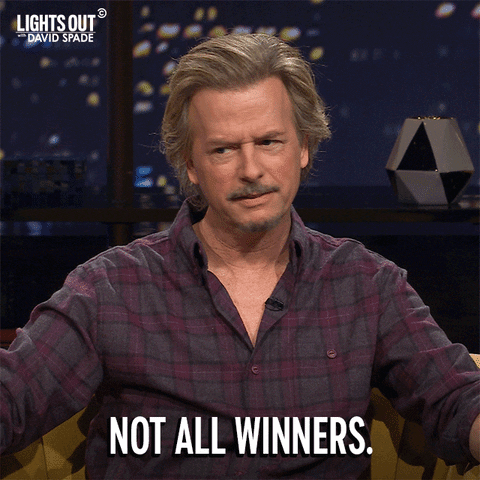 Not to be negative (thanks Giphy!), but I’ll start with the things that I was least impressed with, 1.) Most sites required you to purchase something in order to either access all the materials, or simply have students access ANY material. I realize these companies need to make money, but in school, we don’t have a lot of expendable cash so we have to make sure everything is worth while. 2) Many of the apps are American which makes it very hard to register, focuses on American content only and uses American money to purchase anything in app, meaning costs go up. 3) Lots of the apps that were featured on these sites were not super educational – yes, they featured math or spelling and the content when it was available seemed ok, but the majority of the app was “play” such as designing an avatar or exploring worlds and game spaces. I don’t mind any of the above, however, if I am going to be paying for an educational app for school, this would not be my main focus. And lastly, 4) majority of the apps or programs on these lists require you to download software and that is not possible on my division computers without having our tech crew do it. If you were interested in an app, you have to fill out a LENGTHY application, state every reason under the sun why you feel it’s worth while and educational, then it can take months (wish I was being dramatic!) to get the app put on to your IPads or other devices.
Not to be negative (thanks Giphy!), but I’ll start with the things that I was least impressed with, 1.) Most sites required you to purchase something in order to either access all the materials, or simply have students access ANY material. I realize these companies need to make money, but in school, we don’t have a lot of expendable cash so we have to make sure everything is worth while. 2) Many of the apps are American which makes it very hard to register, focuses on American content only and uses American money to purchase anything in app, meaning costs go up. 3) Lots of the apps that were featured on these sites were not super educational – yes, they featured math or spelling and the content when it was available seemed ok, but the majority of the app was “play” such as designing an avatar or exploring worlds and game spaces. I don’t mind any of the above, however, if I am going to be paying for an educational app for school, this would not be my main focus. And lastly, 4) majority of the apps or programs on these lists require you to download software and that is not possible on my division computers without having our tech crew do it. If you were interested in an app, you have to fill out a LENGTHY application, state every reason under the sun why you feel it’s worth while and educational, then it can take months (wish I was being dramatic!) to get the app put on to your IPads or other devices.
Now to get on with the positives, I found a few apps on these lists I would like to highlight before moving into the apps I currently use in my classroom. ![YouTube Kids [node:content-type] Poster Image](https://d2e111jq13me73.cloudfront.net/sites/default/files/styles/product_image_aspect_switcher_170w/public/product-images/csm-app/youtube-kids-new-logo.png?itok=Yw1PoGRe) The first, Youtube Kids as I am constantly combating my students questionable choices on Youtube during free time at school. Sometimes I don’t think it’s intentional, it’s just what they are used to watching and it’s not appropriate for school. Youtube Kids is essentially a pre-vetted version of Youtube that turns off the ability to deliberately search for inappropriate content. Upon reading further into the functionality, I found that the system Youtube uses is not perfect and inappropriate adverts or profanity get through. I have also read that the amount of advertising in this app is high – which I have pointed when you are having younger children access your program. They are going to be influenced by what they are seeing and directing large amounts of advertising as a trade off for monitoring content seems shady. However, I think there is certainly the potential to be safer than accessing content on the regular Youtube page. I know without a doubt that my students WILL NOT rate this app kindly – they don’t like to be treated like babies and I know they will feel like that if I were to implement this. I believe this is one app that I will have students review.
The first, Youtube Kids as I am constantly combating my students questionable choices on Youtube during free time at school. Sometimes I don’t think it’s intentional, it’s just what they are used to watching and it’s not appropriate for school. Youtube Kids is essentially a pre-vetted version of Youtube that turns off the ability to deliberately search for inappropriate content. Upon reading further into the functionality, I found that the system Youtube uses is not perfect and inappropriate adverts or profanity get through. I have also read that the amount of advertising in this app is high – which I have pointed when you are having younger children access your program. They are going to be influenced by what they are seeing and directing large amounts of advertising as a trade off for monitoring content seems shady. However, I think there is certainly the potential to be safer than accessing content on the regular Youtube page. I know without a doubt that my students WILL NOT rate this app kindly – they don’t like to be treated like babies and I know they will feel like that if I were to implement this. I believe this is one app that I will have students review.
 The next app from the list I am looking forward to trying and having students review is Book Creator. I had heard of this site, but never tried it out and I was very impressed with its functionality after I starting reading about it. It seems easy to use, well laid out and well connected to Google Chrome which is important as that is what our computers at school run. The point of this site is to be able to create and publish short stories and comic books with illustrations, voice overs and text. I love this versatility as I have such a wide range of students, the different layouts and options for sharing your ideas are very important. Another piece I love is that students sign up for our “classroom” using a code, similar to Google Classroom so I can access their work, and they can save their work to a classroom library so other students can look at it too. I also really like how there are so many options for sharing and printing work once it is complete. I think kids, regardless of age, want to take things home and share them with their families – it’s nice to have that capability as some free programs do not. My pedagogy around writing is that students have to feel confident and they have to feel like writers. This year, my students are neither, and writing is hard. Having the option to write and be creative online is a wonderful intensive to encourage writing. In the review and explanation on Creative Education they also offer educators a list of 50 ways to use Creator in the class. I am looking forward to trying this out and seeing what my class has to say. If I had to guess, I think they will like this app.
The next app from the list I am looking forward to trying and having students review is Book Creator. I had heard of this site, but never tried it out and I was very impressed with its functionality after I starting reading about it. It seems easy to use, well laid out and well connected to Google Chrome which is important as that is what our computers at school run. The point of this site is to be able to create and publish short stories and comic books with illustrations, voice overs and text. I love this versatility as I have such a wide range of students, the different layouts and options for sharing your ideas are very important. Another piece I love is that students sign up for our “classroom” using a code, similar to Google Classroom so I can access their work, and they can save their work to a classroom library so other students can look at it too. I also really like how there are so many options for sharing and printing work once it is complete. I think kids, regardless of age, want to take things home and share them with their families – it’s nice to have that capability as some free programs do not. My pedagogy around writing is that students have to feel confident and they have to feel like writers. This year, my students are neither, and writing is hard. Having the option to write and be creative online is a wonderful intensive to encourage writing. In the review and explanation on Creative Education they also offer educators a list of 50 ways to use Creator in the class. I am looking forward to trying this out and seeing what my class has to say. If I had to guess, I think they will like this app.
We know what I want to try…but lets look at what I am already using and what features I find successful or not. My hope is to have my students review Mathletics and Prodigy as well as we use these frequently. The main apps I run in my class are Raz Kids (for my struggling readers only), Mathletics, Prodigy and Class Dojo as a tool to post photos and communicate with families over anything else.  Let’s look at Raz Kids first – right off the hop, this app is expensive. You can access a 14 day trial, but to purchase it costs $115.45 USD for 1 classroom, for 1 year. The positive, you receive 32 spots, which hopefully would be enough to accommodate your entire class if you choose. What does this get you? Essentially Raz-Kids is an online levelled reader program that gives kids access to hundreds of short books at their individual reading level. They are usually followed by a comprehension quiz to test if the student understood the book they read at a basic level. Teachers can choose from 29 different levels and have access to results on a fairly easy to use dashboard. Another positive, this app can be translated into French and Spanish which is good for a dual track school like Connaught. The app can also be used on a laptop which is great as senior classes in our division do not have access to IPad’s readily. There are also short videos and games accessible to students through Raz. Previously, at Lakeview School all of my students received a Raz Account and time to use it was built into our Daily 5 time. Mostly the books would engage a 7 or 8 year old enough that they could spend a 15-20 minute chunk of time on the program. The games and videos could be distracting, but overall it served an ok purpose. However, in my 5/6 split this year at Connaught, I would never spend the money to have all my students on this program. Upon looking through it again, although they offer books up to the level Z, the content of the books in the higher levels, in my opinion would not be engaging to higher level readers. The content is fairly primary and again, in my own opinion, would not be interesting enough to keep engagement. I do have 6 students who are at least 2, if not more grade levels behind in reading and comprehension and they are accessing Raz during a set 30 minute block of specialized reading support and it is going well. They get a chance to read at their independent level without judgement. Each student receives their own login information and can login to their account, not seeing what anyone else is up to. I think that is important for older readers who are behind and reading books that appear more simple to those of their peers. Building confidence in reading is half the battle and I think Raz has the potential to do that when used correctly.
Let’s look at Raz Kids first – right off the hop, this app is expensive. You can access a 14 day trial, but to purchase it costs $115.45 USD for 1 classroom, for 1 year. The positive, you receive 32 spots, which hopefully would be enough to accommodate your entire class if you choose. What does this get you? Essentially Raz-Kids is an online levelled reader program that gives kids access to hundreds of short books at their individual reading level. They are usually followed by a comprehension quiz to test if the student understood the book they read at a basic level. Teachers can choose from 29 different levels and have access to results on a fairly easy to use dashboard. Another positive, this app can be translated into French and Spanish which is good for a dual track school like Connaught. The app can also be used on a laptop which is great as senior classes in our division do not have access to IPad’s readily. There are also short videos and games accessible to students through Raz. Previously, at Lakeview School all of my students received a Raz Account and time to use it was built into our Daily 5 time. Mostly the books would engage a 7 or 8 year old enough that they could spend a 15-20 minute chunk of time on the program. The games and videos could be distracting, but overall it served an ok purpose. However, in my 5/6 split this year at Connaught, I would never spend the money to have all my students on this program. Upon looking through it again, although they offer books up to the level Z, the content of the books in the higher levels, in my opinion would not be engaging to higher level readers. The content is fairly primary and again, in my own opinion, would not be interesting enough to keep engagement. I do have 6 students who are at least 2, if not more grade levels behind in reading and comprehension and they are accessing Raz during a set 30 minute block of specialized reading support and it is going well. They get a chance to read at their independent level without judgement. Each student receives their own login information and can login to their account, not seeing what anyone else is up to. I think that is important for older readers who are behind and reading books that appear more simple to those of their peers. Building confidence in reading is half the battle and I think Raz has the potential to do that when used correctly.
 Next up – the all high and mighty Mathletics. This program has been praised at every school I have attended for its curriculum ties and engaging approach to classroom/online math. Yes, I like Mathletics. Do I think it’s accessible to everyone? No. The cost for this program is very high and without outside support, usually from our parent council, we would not be able to purchase this program for use within the school. For one child, without a classroom or better yet, a school subscription, it can be up to $100 for a year. Costs go down the more children you add. I believe our cost for Connaught School is still around the $8 mark per child which adds up in a school of 550 kids. What is Mathletics and what do they offer? First, one feature I love is that I can customize programming for each student even if they are registered in grade 5 or 6. I have students that are working on math at about a second or third grade level, and with Mathletics I can choose content at that level without the program appearing any different. I think at a middle years level, this is so important as students start to become more concerned with what other students think and they can develop self confidence issues. I can create groups so that students with like ability are together and I can program accordingly. I also have a group of 5 students who go for specialized math support and Mathletics has made it possible for them to have “Work on Math” time independently at their own level while the support teacher is working with a small group. Mathletics has data driven reports.
Next up – the all high and mighty Mathletics. This program has been praised at every school I have attended for its curriculum ties and engaging approach to classroom/online math. Yes, I like Mathletics. Do I think it’s accessible to everyone? No. The cost for this program is very high and without outside support, usually from our parent council, we would not be able to purchase this program for use within the school. For one child, without a classroom or better yet, a school subscription, it can be up to $100 for a year. Costs go down the more children you add. I believe our cost for Connaught School is still around the $8 mark per child which adds up in a school of 550 kids. What is Mathletics and what do they offer? First, one feature I love is that I can customize programming for each student even if they are registered in grade 5 or 6. I have students that are working on math at about a second or third grade level, and with Mathletics I can choose content at that level without the program appearing any different. I think at a middle years level, this is so important as students start to become more concerned with what other students think and they can develop self confidence issues. I can create groups so that students with like ability are together and I can program accordingly. I also have a group of 5 students who go for specialized math support and Mathletics has made it possible for them to have “Work on Math” time independently at their own level while the support teacher is working with a small group. Mathletics has data driven reports. 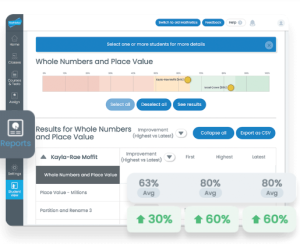 Mathletics gives me the capability to see all my students compared against one another, and their scores on individual assignments. I actually do appreciate this feature. I can keep tabs on whether or not they are actually working on assignments as sometimes when we get the computers out with this group, they tend to stray. The data collection shows me how many times children have attempted a task and if their scores have improved after instruction. I also use this feature to help me see where the majority of students are requiring help or review. All that being said, I can also use other cheaper means to evaluate students and see where they need assistance and where they are excelling. I would never print any of these reports for families or share specific scores so this is solely for myself.
Mathletics gives me the capability to see all my students compared against one another, and their scores on individual assignments. I actually do appreciate this feature. I can keep tabs on whether or not they are actually working on assignments as sometimes when we get the computers out with this group, they tend to stray. The data collection shows me how many times children have attempted a task and if their scores have improved after instruction. I also use this feature to help me see where the majority of students are requiring help or review. All that being said, I can also use other cheaper means to evaluate students and see where they need assistance and where they are excelling. I would never print any of these reports for families or share specific scores so this is solely for myself.
 Next up is the part I am sure most of my students will say they like the best out of any part of Mathletics. The avatars, games and ability to collect money to purchase items within the game. The majority are gamers outside of school so the idea that it’s “gamified” is a bit of a sell. I don’t love this feature in some ways because they give you 2 options, either students must finish all assigned work and then they can work on their avatar, or you can have it open and they can access it whenever. I have some students who will be working on assigned work forever for a variety of reasons, and would never have the opportunity to have “fun” so I am always tempted to turn off the restriction, then however, I have students that will take advantage of this feature and spend all of their time here and not work on anything that has been assigned.
Next up is the part I am sure most of my students will say they like the best out of any part of Mathletics. The avatars, games and ability to collect money to purchase items within the game. The majority are gamers outside of school so the idea that it’s “gamified” is a bit of a sell. I don’t love this feature in some ways because they give you 2 options, either students must finish all assigned work and then they can work on their avatar, or you can have it open and they can access it whenever. I have some students who will be working on assigned work forever for a variety of reasons, and would never have the opportunity to have “fun” so I am always tempted to turn off the restriction, then however, I have students that will take advantage of this feature and spend all of their time here and not work on anything that has been assigned.
 Mathletics also offers paper work to supplement their online work, videos and tutorials and the option to mark in real time. Generally speaking I haven’t used this function often, however, given this time to actually sit down and explore the program, I have been missing out! The printable work books actually have very relevant, well laid out information separated by grade and content. They are split by student, teacher and solution booklets. There are also enrichment activities which is amazing because often I struggle more with finding activities for fast finishers and students who grasp concepts quickly than I do with students who need support as I have lots of resources for that. There is also a section that we can access specific to critical reasoning and logic based on topic and specific outcome. Students can be assigned a single question they need to work through step by step. They can record their answer by typing, writing using a mouse or explaining it verbally. This is such a wonderful feature because I have varying levels of language usage in my class as well as a student with severe dyslexia – having these options allows them all to be more independent and confident during math as they can show what they know in a way that is comfortable for them. Not to mention, with this feature, I can also assign specific grade level work to each student. I am grateful to have had the chance to look through! There are lots of pieces in this section that I am going to utilize.
Mathletics also offers paper work to supplement their online work, videos and tutorials and the option to mark in real time. Generally speaking I haven’t used this function often, however, given this time to actually sit down and explore the program, I have been missing out! The printable work books actually have very relevant, well laid out information separated by grade and content. They are split by student, teacher and solution booklets. There are also enrichment activities which is amazing because often I struggle more with finding activities for fast finishers and students who grasp concepts quickly than I do with students who need support as I have lots of resources for that. There is also a section that we can access specific to critical reasoning and logic based on topic and specific outcome. Students can be assigned a single question they need to work through step by step. They can record their answer by typing, writing using a mouse or explaining it verbally. This is such a wonderful feature because I have varying levels of language usage in my class as well as a student with severe dyslexia – having these options allows them all to be more independent and confident during math as they can show what they know in a way that is comfortable for them. Not to mention, with this feature, I can also assign specific grade level work to each student. I am grateful to have had the chance to look through! There are lots of pieces in this section that I am going to utilize.
Mathletics also tries to sell their program specifically to kids with the following features – the ability to show yourself off with your customizable avatar, constant updating of new and exciting games, mathletics live, achievement certificates to take home, and just generally a wide variety of activities to choose from on the program. This is where I struggle with Mathletics – they really do a good job advertising to kids and taking advantage of the fact that kids will harass their parents to keep the program even with a high cost. Mathletics live is a cool concept and I like that students can see where in the world their opponent is from, however, the content is often repetitive. For my lower level learners, this is wonderful as repetition is key, but for my higher level learners, it’s a waste of time.
 Last but certainly not least, and by far my students favourite program to play on in my opinion – Prodigy! That being said, I will be curious to see what the students have to say when they review this program – I’m wondering if my perception is accurate and if it is, what makes it better than Mathletics or any other site we use??? First, Prodigy is FREE! Yes, you read that correctly. You can access the full program, 100% free all the time – no trial periods. This is wonderful for schools with our budgets being so minimal. However, Prodigy does offer upgrades to students for payment to get extra in game outfits or avatar modifications although Prodigy assures users that the payment portion does not affect the educational aspects of the game and therefore you don’t have to pay to get the biggest benefits of the program. They claim on their website, “Students practice math and learn new skills as they navigate a fantasy world packed with action and adventure. Built to captivate students and motivate learning, Prodigy brings math curricula and custom assignments to life in a world where success depends on practicing and mastering more than 1,400 key math skills.” I will say that from my observations, my class enjoys this app. It seems to be engaging and motivating to them. They like to win upgrades, defeat characters and build up their “homes”. That is a huge win in a class that is tough to engage.
Last but certainly not least, and by far my students favourite program to play on in my opinion – Prodigy! That being said, I will be curious to see what the students have to say when they review this program – I’m wondering if my perception is accurate and if it is, what makes it better than Mathletics or any other site we use??? First, Prodigy is FREE! Yes, you read that correctly. You can access the full program, 100% free all the time – no trial periods. This is wonderful for schools with our budgets being so minimal. However, Prodigy does offer upgrades to students for payment to get extra in game outfits or avatar modifications although Prodigy assures users that the payment portion does not affect the educational aspects of the game and therefore you don’t have to pay to get the biggest benefits of the program. They claim on their website, “Students practice math and learn new skills as they navigate a fantasy world packed with action and adventure. Built to captivate students and motivate learning, Prodigy brings math curricula and custom assignments to life in a world where success depends on practicing and mastering more than 1,400 key math skills.” I will say that from my observations, my class enjoys this app. It seems to be engaging and motivating to them. They like to win upgrades, defeat characters and build up their “homes”. That is a huge win in a class that is tough to engage.
Let’s dig in…first, I love that it’s curriculum aligned. When you are setting up your account you can choose the area you’re in so that programming is fairly accurate to outcomes you may actually be working on. This makes this app more appealing to me as it’s easier to justify having the technology out when you are meeting or at least addressing outcomes in the process. I love that Prodigy’s programming, much like Mathletics, is customizable. There is a placement test that kids take when they get their account set up and it chooses, using specific algorithms, which grade level they start at. That information is not shared with them, just with me so they can’t compare with one another – which I feel is important. Throughout their use of the program, smaller assessments ensure they remain on the right path and that gaps in their knowledge or weaker spots can be readdressed throughout the game. Although I couldn’t find much information about the specific algorithms used to create Prodigy, from what I have observed, questions seems fairly accurately aligned with students skill level. One negative I have found about Prodigy is that it is a United States based company and therefore the push for standardized test prep is huge and a lot of the data collected supporting the site focused on that. In Canada, because this isn’t as big of an issue, it takes more time to vet the data and decide how it would correlate with our curriculum and content.
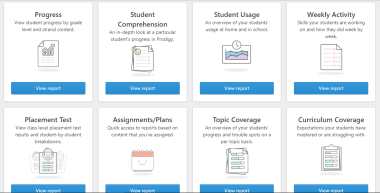 Next, much like Mathletics, there are so many ways you can view reports in Prodigy! It breaks down student assignments into grade level questions, how many questions they answered, how long it took them to complete assignment and the percentage of the questions they got correct. Although I don’t focus on grades alone, it’s nice to see the level of work students are being placed at independently and where gaps are so I can fill them in in class. Prodigy is always an additional option – students receive one hour of technology time and Mathletics or Prodigy take up at least half of that time. There is no such thing as too much extra practice.
Next, much like Mathletics, there are so many ways you can view reports in Prodigy! It breaks down student assignments into grade level questions, how many questions they answered, how long it took them to complete assignment and the percentage of the questions they got correct. Although I don’t focus on grades alone, it’s nice to see the level of work students are being placed at independently and where gaps are so I can fill them in in class. Prodigy is always an additional option – students receive one hour of technology time and Mathletics or Prodigy take up at least half of that time. There is no such thing as too much extra practice.
 Finally, with Prodigy, I feel like questions are not all just math fluency based, meaning quick adding, subtracting, multiplying or dividing – they sometimes have multiple parts that students have to solve which take time to work through. When they are stumped, prompts and hints appear but only for work they are struggling with so it doesn’t get used as a crutch. I really appreciate this about the program, kids feel supported but it’s making work so easy that it’s a waste of time. In a study Prodigy completed (keeping in mind this study was completed by the company who is reporting the data and therefore could be skewed) it showed the following information:
Finally, with Prodigy, I feel like questions are not all just math fluency based, meaning quick adding, subtracting, multiplying or dividing – they sometimes have multiple parts that students have to solve which take time to work through. When they are stumped, prompts and hints appear but only for work they are struggling with so it doesn’t get used as a crutch. I really appreciate this about the program, kids feel supported but it’s making work so easy that it’s a waste of time. In a study Prodigy completed (keeping in mind this study was completed by the company who is reporting the data and therefore could be skewed) it showed the following information:
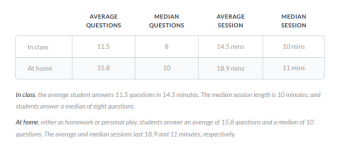
Students at school were answering an average of 11.5 questions in a 14.5 minute session. As much as I know the kids appreciate the “extra” gaming style of Prodigy, it’s nice to know that they spend the majority of time on content and not building or modifying characters, houses, etc.
 The last app that I use regularly that I wanted to review and look more closely at is Class Dojo. My initial reaction is that I have lots of problems with this app. I began using it after trying Facebook and Seesaw with my class unsuccessfully. There was zero parent buy in and I was wasting my time posting content daily for 1 or 2 parents. Class Dojo is widely used in my building and therefore was easier to engage families. Many families were already signed up and their connection just rolled over to me in the new year by simply putting in a new code, or me sending them a request through the app by entering their cell phone number. That was the easy part and what had me buying in, in the first place – I have 19 families out of 26 signed up, not all check the app and updates but they are on there should they choose to login. I post things like photos of our day-to-day activities, notes, calendars, permission slips, spelling words, etc. knowing that sometimes paper copies don’t quite make it home in my room. Class Dojo allows for messages to be translated into over 30 languagees instantly which I also like for families who don’t speak English as first language at home. Class Dojo has many other capabilities that I will touch on, most of which are the reason I haven’t been crazy about this program.
The last app that I use regularly that I wanted to review and look more closely at is Class Dojo. My initial reaction is that I have lots of problems with this app. I began using it after trying Facebook and Seesaw with my class unsuccessfully. There was zero parent buy in and I was wasting my time posting content daily for 1 or 2 parents. Class Dojo is widely used in my building and therefore was easier to engage families. Many families were already signed up and their connection just rolled over to me in the new year by simply putting in a new code, or me sending them a request through the app by entering their cell phone number. That was the easy part and what had me buying in, in the first place – I have 19 families out of 26 signed up, not all check the app and updates but they are on there should they choose to login. I post things like photos of our day-to-day activities, notes, calendars, permission slips, spelling words, etc. knowing that sometimes paper copies don’t quite make it home in my room. Class Dojo allows for messages to be translated into over 30 languagees instantly which I also like for families who don’t speak English as first language at home. Class Dojo has many other capabilities that I will touch on, most of which are the reason I haven’t been crazy about this program.
Class Dojo describes themselves as, “a school communication platform that teachers, students, and families use every day to build close-knit communities by sharing what’s being learned in the classroom home through photos, videos, and messages.”  There are some positives that I have stumbled across while researching, they have a teacher toolkit that allows you to make fair groups, play music, use a noise monitor, instruction display function, morning meeting app, timer and a think, pair share app. Before this I wasn’t aware of these choices as I had only used the app for sharing information or contacting families. Upon looking at them, I will absolutely use some of these during my day. It’s a great feature to have them all in the same spot and accessible through the cellphone app or desktop version.
There are some positives that I have stumbled across while researching, they have a teacher toolkit that allows you to make fair groups, play music, use a noise monitor, instruction display function, morning meeting app, timer and a think, pair share app. Before this I wasn’t aware of these choices as I had only used the app for sharing information or contacting families. Upon looking at them, I will absolutely use some of these during my day. It’s a great feature to have them all in the same spot and accessible through the cellphone app or desktop version.  Another capability that I like but wouldn’t use with my class this year is the student portfolio section. Students can use a letter/number code or QR to upload work, pictures, or stories to their personal page. Family members can sign up to receive notifications when something is posted under their child’s name. Sounds fine and dandy until you students aren’t responsible enough to make good choices as to what to post, although I can vet them first. I have a Google Classroom and we struggle not to post silliness to the classwork chat. In a different setting, I would love to use this function to empower students to be proud of their work and share it. Maybe next year!
Another capability that I like but wouldn’t use with my class this year is the student portfolio section. Students can use a letter/number code or QR to upload work, pictures, or stories to their personal page. Family members can sign up to receive notifications when something is posted under their child’s name. Sounds fine and dandy until you students aren’t responsible enough to make good choices as to what to post, although I can vet them first. I have a Google Classroom and we struggle not to post silliness to the classwork chat. In a different setting, I would love to use this function to empower students to be proud of their work and share it. Maybe next year!
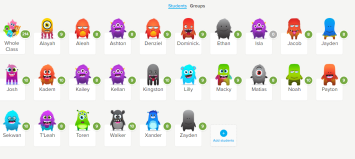 They also have a platform that can be used to award students points for positive behaviour that you outline, such as, completing work, being on task, being kind, etc. or remove points for negative behaviour that you outline such as being disruptive, not working, etc. I started using this function when were struggling in class with behaviour/focus because I thought it would encourage change and give us a common goal as a class as they points are banked. Other staff members could access our class and therefore add or delete points as well. Notifications can be sent to families when students receive Dojo points and when they are taken away so I thought perhaps this might encourage positive choices too. The kids could not login in independently and were only privy to their points by asking, having me show the whole class or asking their parents if they were on the app. I gave a selection of prizes that students could choose from when we did “Dojo Store” if they had earned the points. I did this all with serious reservation. I take issue with publicly displaying student success and “failure” for all to see. I have concerns with students mental well being in the sense of building up or destroying self confidence. Students can be sensitive whether they like to show it or not, and seeing classmates surpass them, or losing points daily can be discouraging rather than encouraging. I don’t believe everyone deserves a participation medal for showing up, however, my concern is that when kids have a tough life and MANY factors are impacting their day at school, there is more to behaviour than I we can imagine. With Dojo, mistakes seem more permanent and I always focus on a clean slate everyday. Although the capability of this section of app is valuable, well laid out and organized, I have not kept up with using it.
They also have a platform that can be used to award students points for positive behaviour that you outline, such as, completing work, being on task, being kind, etc. or remove points for negative behaviour that you outline such as being disruptive, not working, etc. I started using this function when were struggling in class with behaviour/focus because I thought it would encourage change and give us a common goal as a class as they points are banked. Other staff members could access our class and therefore add or delete points as well. Notifications can be sent to families when students receive Dojo points and when they are taken away so I thought perhaps this might encourage positive choices too. The kids could not login in independently and were only privy to their points by asking, having me show the whole class or asking their parents if they were on the app. I gave a selection of prizes that students could choose from when we did “Dojo Store” if they had earned the points. I did this all with serious reservation. I take issue with publicly displaying student success and “failure” for all to see. I have concerns with students mental well being in the sense of building up or destroying self confidence. Students can be sensitive whether they like to show it or not, and seeing classmates surpass them, or losing points daily can be discouraging rather than encouraging. I don’t believe everyone deserves a participation medal for showing up, however, my concern is that when kids have a tough life and MANY factors are impacting their day at school, there is more to behaviour than I we can imagine. With Dojo, mistakes seem more permanent and I always focus on a clean slate everyday. Although the capability of this section of app is valuable, well laid out and organized, I have not kept up with using it.
Overall, I don’t feel terribly about any of my choices. Once I was sat down and dug through, I found some really positive things in each different program and gave some thought to some of the pieces that didn’t fit my personal needs. I think what is most important to remember is that we need to be critical of what were using the classroom and why we’re using it. With my student this year, using technology is an excellent way to encourage engagement and I value many aspects of the programs I use for that reason.
Thanks for reading this very long post and for allowing the time to explore some of the apps I have been using for many years with little research…it makes such a difference to take the time to read the fine print, look at the functionally and make sure it is serving you!
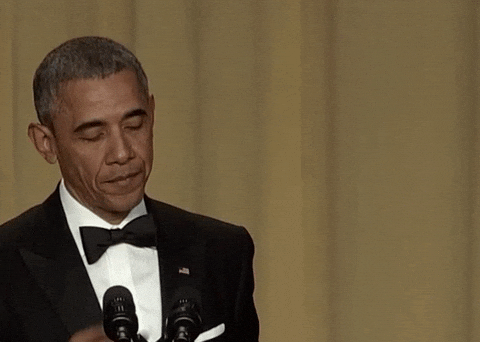
Signing off. Thanks giphy!
❤ Dani
“Educating the mind without educating the heart,
is no education at all.” – Aristotle
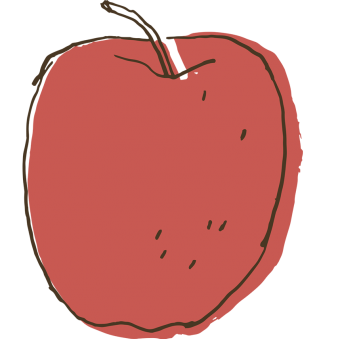
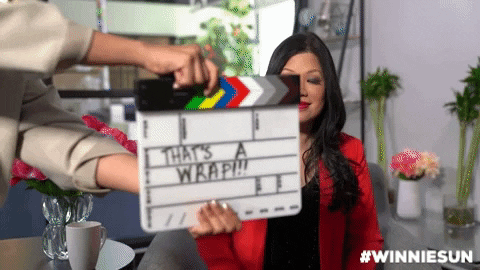


 In his blog post
In his blog post  My pedagogy aligns with the idea that learning sometimes doesn’t fit the strict structure of school. I really appreciated George’s interpretation of learning and the freedom and flexibility that learning gives people. Especially in the uncertain times in which we are living, I think families are getting caught up in the idea of “schooling” and obsessing over their children missing “school” however, I think if people focused on their children LEARNING they would see that learning can happen in many ways, in many places. Baking, walking and looking at nature, fixing a car, singing, dancing, making art, learning a new skill on the computer, knitting, speaking with a family member on the phone, etc. The list could go on and on. So, as much as I did like a lot of what Doxtdator said, saying that these ideas leave, “little room for approaches to education that don’t fit the binaries they have drawn up”, “When I see these charts, I see no room for myself as an educator and I have a hard time seeing where many educators concerned with social justice education would fit in.” I don’t agree with. I think these approaches are an offer for people people to find where they fit and maybe use these guidelines to assess their ideas and views in education. Social justice and other important issues, just because they are not explicitly written, doesn’t mean they are not there nor are they less important or not to be included. Again, I feel like this is an offer to find your space and voice, not a tool of exclusion in the educational marketing landscape. Doxtdator finishes his post by saying, “Ideally, I’d hope to see those who push for change in education to show solidarity with those who have fought hard for social justice by citing and lifting up their voices. Educators deserve better than having people throw up their hands in the face of this challenge as if that simple work were too much to expect.” I agree with this wholeheartedly, I am just not 100% sure that the media and advertising of the authors he targets in this post are doing that.
My pedagogy aligns with the idea that learning sometimes doesn’t fit the strict structure of school. I really appreciated George’s interpretation of learning and the freedom and flexibility that learning gives people. Especially in the uncertain times in which we are living, I think families are getting caught up in the idea of “schooling” and obsessing over their children missing “school” however, I think if people focused on their children LEARNING they would see that learning can happen in many ways, in many places. Baking, walking and looking at nature, fixing a car, singing, dancing, making art, learning a new skill on the computer, knitting, speaking with a family member on the phone, etc. The list could go on and on. So, as much as I did like a lot of what Doxtdator said, saying that these ideas leave, “little room for approaches to education that don’t fit the binaries they have drawn up”, “When I see these charts, I see no room for myself as an educator and I have a hard time seeing where many educators concerned with social justice education would fit in.” I don’t agree with. I think these approaches are an offer for people people to find where they fit and maybe use these guidelines to assess their ideas and views in education. Social justice and other important issues, just because they are not explicitly written, doesn’t mean they are not there nor are they less important or not to be included. Again, I feel like this is an offer to find your space and voice, not a tool of exclusion in the educational marketing landscape. Doxtdator finishes his post by saying, “Ideally, I’d hope to see those who push for change in education to show solidarity with those who have fought hard for social justice by citing and lifting up their voices. Educators deserve better than having people throw up their hands in the face of this challenge as if that simple work were too much to expect.” I agree with this wholeheartedly, I am just not 100% sure that the media and advertising of the authors he targets in this post are doing that. This idea essentially means that advertisers would prefer to work with companies that sell products that regardless of a price change, will still sell in large quantities, as well as companies with many products in their line up so that they can put a product forward that will draw customers in regardless of margin, to hopefully purchase many products –
This idea essentially means that advertisers would prefer to work with companies that sell products that regardless of a price change, will still sell in large quantities, as well as companies with many products in their line up so that they can put a product forward that will draw customers in regardless of margin, to hopefully purchase many products – 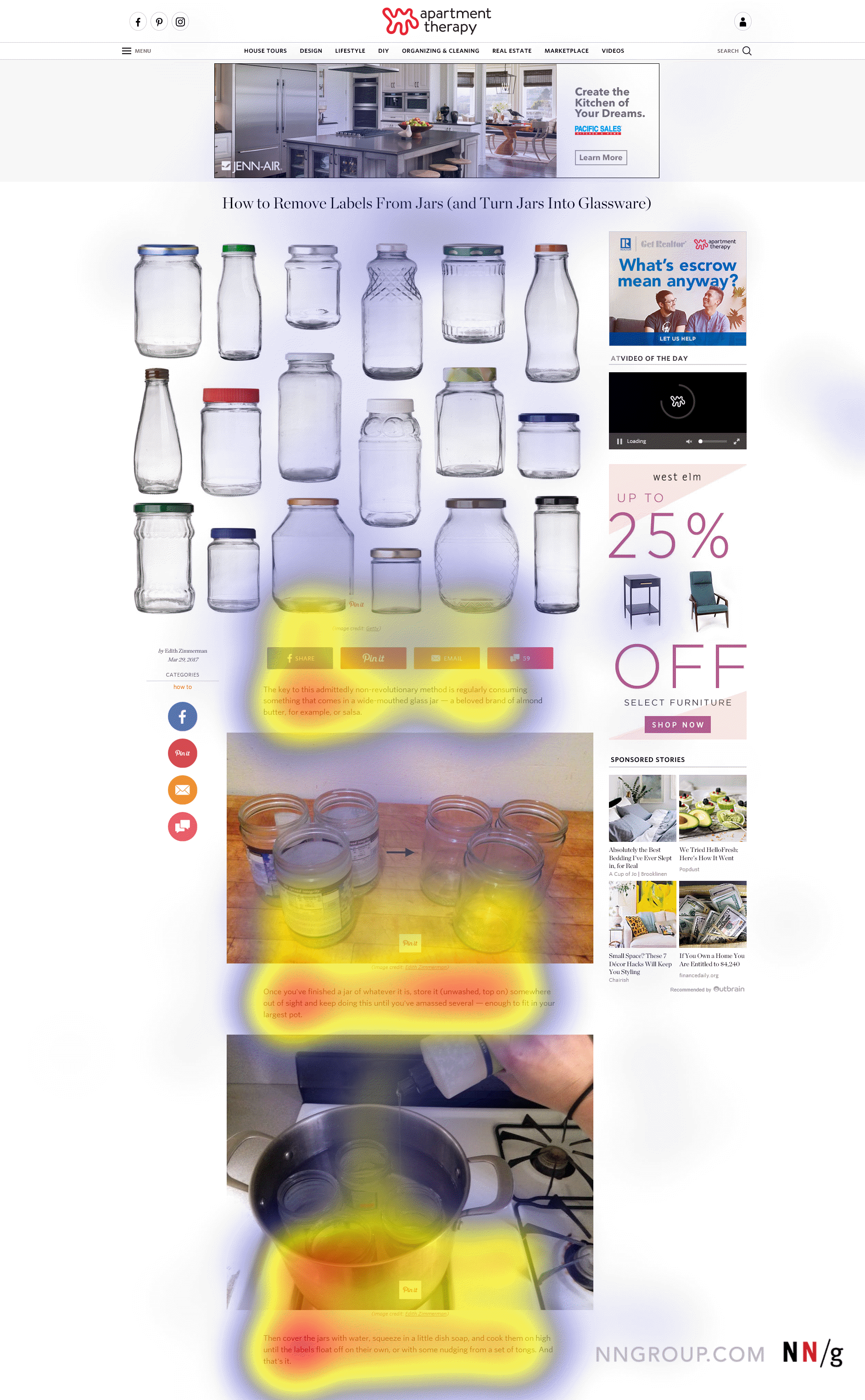 A research based user experience company called
A research based user experience company called  “About
“About 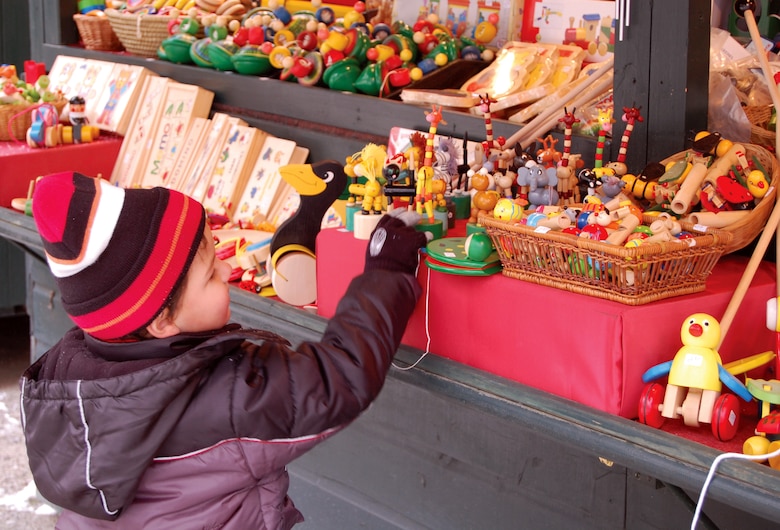 Lastly I would like to comment quickly on TV advertising and something that I noticed while choosing to socially isolate over the past 10 days. I always pay mind to commercials, my husband, never even looks up until the show he was watching comes back on – I suppose there are two types! That being said, I notice the types of ads that play regularly to me on the channels we watch the most – usually sports if they are available. The other night as we were aimlessly searching through channels, he landed on YTV, a children’s channel during the day that offers “adult” cartoon type shows in the evening. I was completely floored at the commercials – none of the regular commercials I saw on the sport channels played once on YTV even though they cycled through repeatedly on the other channels. On YTV EVERY ad was targeted to children – there were toy commercials, clothing commercials, video games, etc. even though it was the evening and kids would likely not be watching. I couldn’t believe that they would be so blatant in their attempt to have children want for products however, at this point, it is likely the best option as children haven’t developed the skills to train their brains not to pay attention to them!
Lastly I would like to comment quickly on TV advertising and something that I noticed while choosing to socially isolate over the past 10 days. I always pay mind to commercials, my husband, never even looks up until the show he was watching comes back on – I suppose there are two types! That being said, I notice the types of ads that play regularly to me on the channels we watch the most – usually sports if they are available. The other night as we were aimlessly searching through channels, he landed on YTV, a children’s channel during the day that offers “adult” cartoon type shows in the evening. I was completely floored at the commercials – none of the regular commercials I saw on the sport channels played once on YTV even though they cycled through repeatedly on the other channels. On YTV EVERY ad was targeted to children – there were toy commercials, clothing commercials, video games, etc. even though it was the evening and kids would likely not be watching. I couldn’t believe that they would be so blatant in their attempt to have children want for products however, at this point, it is likely the best option as children haven’t developed the skills to train their brains not to pay attention to them!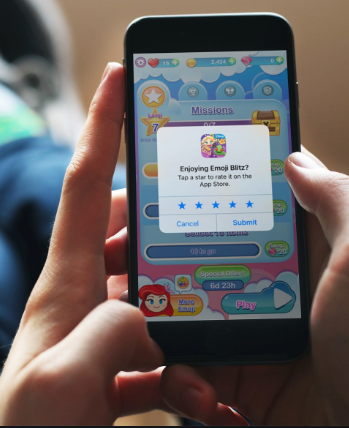
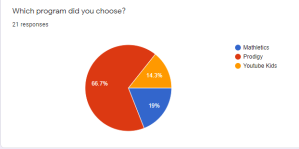 The majority of students, as I suspected chose Prodigy because it seems to be a class favourite. I was happy to see that some students went with Youtube Kids because we hadn’t explored that program yet and I was excited to see what they thought. The next question was asking them to identify why they selected that program and answers ranged from, “because it’s a good program”, “because it’s my fave”, “because I know alot about it”, “I like Youtube and I like watching funny videos”, “cause I was interested”, “it’s a good school game” to “i don’ know why I picked it”. Although this question wasn’t crucial to my research, I was interested in what drew kids to certain programs. I also found it interesting that some students chose the program because they liked it and knew a lot about it already, some chose it because they were interested in learning more and some chose it because they used it and liked a function of it.
The majority of students, as I suspected chose Prodigy because it seems to be a class favourite. I was happy to see that some students went with Youtube Kids because we hadn’t explored that program yet and I was excited to see what they thought. The next question was asking them to identify why they selected that program and answers ranged from, “because it’s a good program”, “because it’s my fave”, “because I know alot about it”, “I like Youtube and I like watching funny videos”, “cause I was interested”, “it’s a good school game” to “i don’ know why I picked it”. Although this question wasn’t crucial to my research, I was interested in what drew kids to certain programs. I also found it interesting that some students chose the program because they liked it and knew a lot about it already, some chose it because they were interested in learning more and some chose it because they used it and liked a function of it. Next I asked students to share whether or not they used the program at school or at home – again, I was most curious to know how much students were engaging in the use of these programs and if they even used them without my supervision. Part of being able to evaluate them is actually using them. These results didn’t really surprise me as I assumed the majority of my students do not engage with “school programs” at home.
Next I asked students to share whether or not they used the program at school or at home – again, I was most curious to know how much students were engaging in the use of these programs and if they even used them without my supervision. Part of being able to evaluate them is actually using them. These results didn’t really surprise me as I assumed the majority of my students do not engage with “school programs” at home. Some seemed unsure about this question – they were coming up with inquires like, “what if I say yes and they don’t like it”. We spoke about how it would be up the person trying the app to decide for themselves whether they like the program or not, but what is most crucial for us, is being honest in what we thought and trying to give good detailed reviews so that people can then make their own educated choices. The majority of students who selected no, appeared to have chosen Youtube Kids as their app. When I checked in with a few students, they said they felt like it was for “babies” and that they liked the idea but were mad because they couldn’t find any of their videos. They wouldn’t suggest it because it wasn’t for kids their age. I thought this was insightful because they were starting to appreciate programs for their functionality, but considering their relevance to themselves and where they are at. To follow up with this question I asked them, why or why they wouldn’t recommend the app. For me, the important learning comes with the understanding of why we do what we do. The answers here varied but included, “even after the things wrong with the site it still is a good website for math”, “Because they might like it because you can learn more. You need to answer a question to battle”, “i think that because if people dont know what it is they can play this. also some people that dont know how to do some math yet they can try this out”, “cause i want other kids to have fun to”, “Because its safe” and “They might like it because they can find videos they want to watch”. Although these answers are fairly generic, I could see some glimpses of kids trying to rationalize why they would ask other students to try a site. My goal for this question was to get kids thinking of why we choose certain sites over others.
Some seemed unsure about this question – they were coming up with inquires like, “what if I say yes and they don’t like it”. We spoke about how it would be up the person trying the app to decide for themselves whether they like the program or not, but what is most crucial for us, is being honest in what we thought and trying to give good detailed reviews so that people can then make their own educated choices. The majority of students who selected no, appeared to have chosen Youtube Kids as their app. When I checked in with a few students, they said they felt like it was for “babies” and that they liked the idea but were mad because they couldn’t find any of their videos. They wouldn’t suggest it because it wasn’t for kids their age. I thought this was insightful because they were starting to appreciate programs for their functionality, but considering their relevance to themselves and where they are at. To follow up with this question I asked them, why or why they wouldn’t recommend the app. For me, the important learning comes with the understanding of why we do what we do. The answers here varied but included, “even after the things wrong with the site it still is a good website for math”, “Because they might like it because you can learn more. You need to answer a question to battle”, “i think that because if people dont know what it is they can play this. also some people that dont know how to do some math yet they can try this out”, “cause i want other kids to have fun to”, “Because its safe” and “They might like it because they can find videos they want to watch”. Although these answers are fairly generic, I could see some glimpses of kids trying to rationalize why they would ask other students to try a site. My goal for this question was to get kids thinking of why we choose certain sites over others. Another aspect of this assignment was to have students spend some time exploring reviews that people had already left regarding the specific program they had chosen to research. I wanted them to understand what a review was, how they were written and what their function was. We looked a little bit at what companies might do if they were to have a negative review on their product and how having positive reviews might impact their success. Blogger Takumi Kakehi said, “Since iOS 11 was introduced in 2017, Apple began restricting app developers from implementing custom review prompts. Instead, Apple encouraged them to use their new native prompt, which only shows up 3 times max per year. Also, this pop-up won’t show up again once users leave a review. It also helps developers to implement the prompt easily, but apps can no longer ask users after major bug fixes or big feature introductions.” I read this to the kids and they asked how it helped if people couldn’t change their mind and I thought that was a very good point. If companies took reviews to heart and made changes based on those recommendations, and no one was given the chance to amend, how would people be getting an accurate view of the program or its capabilities? We used this as a spring board to write our own reviews after researching our chosen programs. Again, the writing ability of my class dictated the length of the responses but I truly felt like kids had a good grasp of the point of reviews. Here are some of the reviews by kids wrote, “prodigy is a great site for learning but there is quite a few ads other than that is pretty good”, “YouTube is a good program for watching videos. I like all the funny videos but sometimes it can be hard to find the video that I want to watch”, “i wish they put a little less monsters in the game”, “It’s a good site but the membership spam I hate”, “I Like this Program And think Other Kids Would learn a lot of math stuff I would give it a 4/5” and “Prodigy is a fun good way of learning math in video game form, However, for axtra prizes or to use certain feature you need a paid membership”. I was happy to see students referencing ad spam, loop holes with memberships vs. unpaid subscriptions and just generally taking a side or taking in media with a critical lens.
Another aspect of this assignment was to have students spend some time exploring reviews that people had already left regarding the specific program they had chosen to research. I wanted them to understand what a review was, how they were written and what their function was. We looked a little bit at what companies might do if they were to have a negative review on their product and how having positive reviews might impact their success. Blogger Takumi Kakehi said, “Since iOS 11 was introduced in 2017, Apple began restricting app developers from implementing custom review prompts. Instead, Apple encouraged them to use their new native prompt, which only shows up 3 times max per year. Also, this pop-up won’t show up again once users leave a review. It also helps developers to implement the prompt easily, but apps can no longer ask users after major bug fixes or big feature introductions.” I read this to the kids and they asked how it helped if people couldn’t change their mind and I thought that was a very good point. If companies took reviews to heart and made changes based on those recommendations, and no one was given the chance to amend, how would people be getting an accurate view of the program or its capabilities? We used this as a spring board to write our own reviews after researching our chosen programs. Again, the writing ability of my class dictated the length of the responses but I truly felt like kids had a good grasp of the point of reviews. Here are some of the reviews by kids wrote, “prodigy is a great site for learning but there is quite a few ads other than that is pretty good”, “YouTube is a good program for watching videos. I like all the funny videos but sometimes it can be hard to find the video that I want to watch”, “i wish they put a little less monsters in the game”, “It’s a good site but the membership spam I hate”, “I Like this Program And think Other Kids Would learn a lot of math stuff I would give it a 4/5” and “Prodigy is a fun good way of learning math in video game form, However, for axtra prizes or to use certain feature you need a paid membership”. I was happy to see students referencing ad spam, loop holes with memberships vs. unpaid subscriptions and just generally taking a side or taking in media with a critical lens.
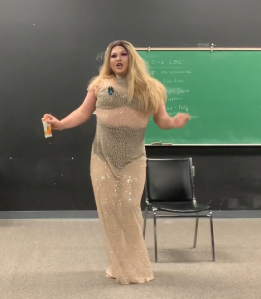 I was blown away by some of the things I have learned about drag from the readings this week and how they tied into the contemporary issues we had been learning about in previous classes, or about other art forms – I didn’t realize how competitive drag was/is in the bigger hubs around the world like New York, Chicago, and Los Angeles. Adora was telling us that in Regina, because the scene is so much smaller, it is very supportive and performances are more about sharing your art than competing…although she did say Queens are always trying to “outdo” each other. 😉 In the
I was blown away by some of the things I have learned about drag from the readings this week and how they tied into the contemporary issues we had been learning about in previous classes, or about other art forms – I didn’t realize how competitive drag was/is in the bigger hubs around the world like New York, Chicago, and Los Angeles. Adora was telling us that in Regina, because the scene is so much smaller, it is very supportive and performances are more about sharing your art than competing…although she did say Queens are always trying to “outdo” each other. 😉 In the  During the facilitation we had the opportunity to view an episode of
During the facilitation we had the opportunity to view an episode of 
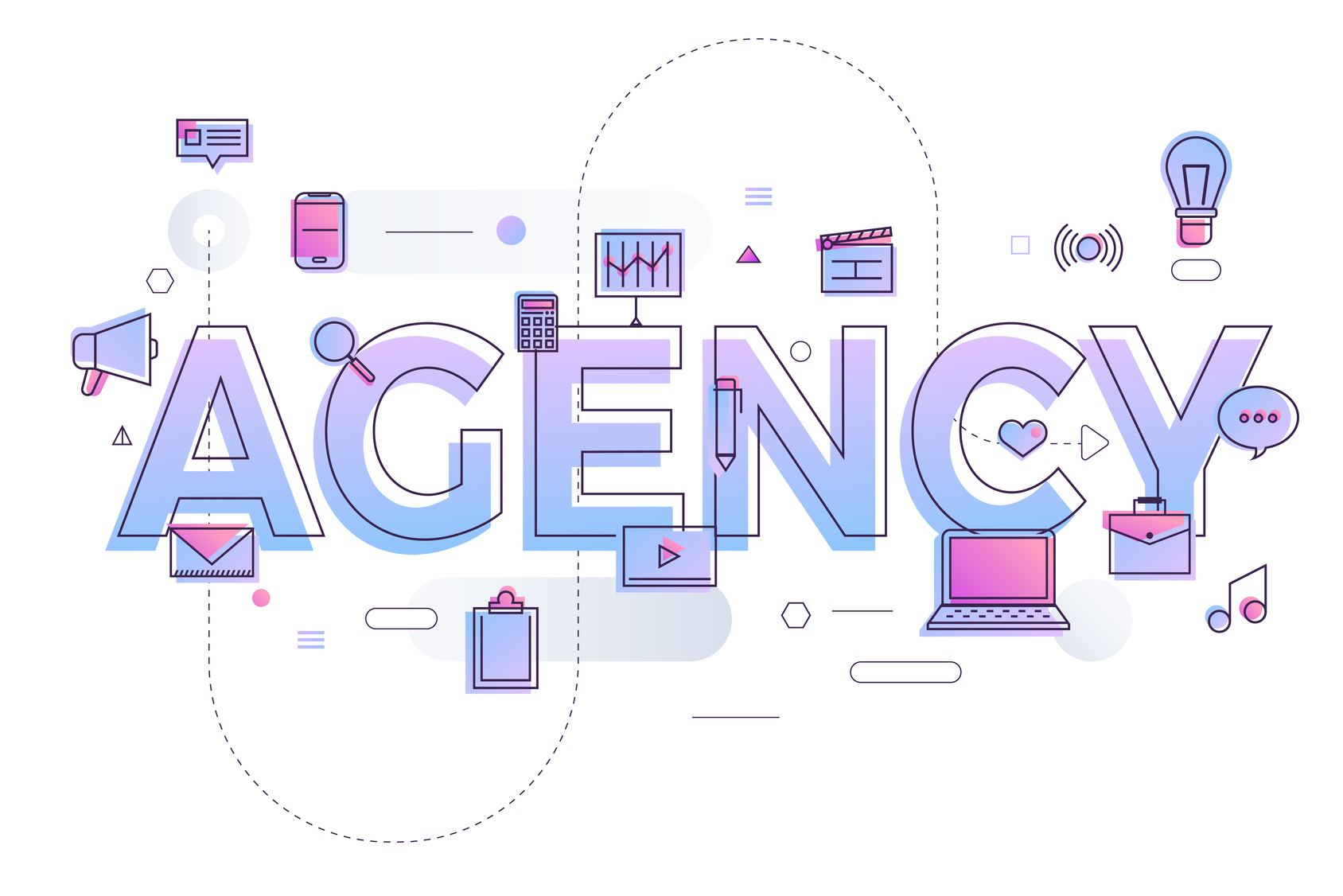 So, from what I could find as a proper definition on
So, from what I could find as a proper definition on 
 I snapped a very poor photo of his board because I was drawn in by how he compared cultures and spoke to the fact that culture is not just where we come from and what is associated with that, but it can be the cultures we create and choose to associate with. The way Brad tied the circle of courage into this messaging was also really amazing – his Indigenous culture was seamlessly woven into his pedagogy and it was everything and more than I aspire to in my classroom. You could see and hear Brad’s passion and inspiration shining throughout this entire presentation and it was really beautiful. Brad also gave me hope that it doesn’t need to be perfect – we are all a work in progress and we can have permission to grow and change and let what inspires us, push us to the next level. He also (and he probably didn’t realize it) but he gave me permission to allow negative things to push me forward to – when he was confronted by the reporter at the Olympics and was asked questions that he thought weren’t phrased properly, he took that fire and changed the direction of his life with it. That is such a powerful message…not only for me, but for the kids I teach – they need to know that no matter how much negative there is around them, they need to take that as fuel to do better and be better than those negative things. Brad was so incredibly well spoken that it truly did inspire me to go back to my classroom and tell my kids that they can follow their passions and something good will come of it. It may not be the exact path they planned, it may not be the exact passion they expected, but they can make it work. I’m excited to show my students Brad’s song, “I Remember” and show them that dreams do come true when we hang in there and beat adversity. Not every dream we have will come true, but we can work hard and see where life takes us and be proud of our accomplishments even when they aren’t exactly what we expected.
I snapped a very poor photo of his board because I was drawn in by how he compared cultures and spoke to the fact that culture is not just where we come from and what is associated with that, but it can be the cultures we create and choose to associate with. The way Brad tied the circle of courage into this messaging was also really amazing – his Indigenous culture was seamlessly woven into his pedagogy and it was everything and more than I aspire to in my classroom. You could see and hear Brad’s passion and inspiration shining throughout this entire presentation and it was really beautiful. Brad also gave me hope that it doesn’t need to be perfect – we are all a work in progress and we can have permission to grow and change and let what inspires us, push us to the next level. He also (and he probably didn’t realize it) but he gave me permission to allow negative things to push me forward to – when he was confronted by the reporter at the Olympics and was asked questions that he thought weren’t phrased properly, he took that fire and changed the direction of his life with it. That is such a powerful message…not only for me, but for the kids I teach – they need to know that no matter how much negative there is around them, they need to take that as fuel to do better and be better than those negative things. Brad was so incredibly well spoken that it truly did inspire me to go back to my classroom and tell my kids that they can follow their passions and something good will come of it. It may not be the exact path they planned, it may not be the exact passion they expected, but they can make it work. I’m excited to show my students Brad’s song, “I Remember” and show them that dreams do come true when we hang in there and beat adversity. Not every dream we have will come true, but we can work hard and see where life takes us and be proud of our accomplishments even when they aren’t exactly what we expected. Kim says, “By studying the patterns, colours and techniques used to make these (the designs of her people) clothes, I gained knowledge that would one day help me to realize one of my dreams: to revive the clothes of my ancestors by giving them a contemporary form.” (p. 62). This quote inspired my final project with my art class for this term. We can use art to bring things unseen to life. I know my students have so much to share about themselves and no outlet – what if we gave them a contemporary form to put it in??? Our lives inspire our art whether we are conscious of it or not. “We all have predilections, depending, I think, on the time of our lives and the things we experience at the present.” (p. 64). Kim says her ultimate goal is to connect the modern world with that of her ancestors – my goal for my final project is to connect my students and I’s outside world, with the one we have going on within. Kim encourages us to “look with the eyes of the heart” (p. 70). and I loved that. We can see and feel with our heart and that is potentially the most incredible part of art. Art (in any form) gives us the ability to see it with so many more facets of ourselves than or eyes. I think it’s important for kids to understand that they can look for inspiration and drive in the positive and negative things they endure and to stick with their passion – even if it turns out to be a hobby in their spare and not their main job. We deserve to do things we love.
Kim says, “By studying the patterns, colours and techniques used to make these (the designs of her people) clothes, I gained knowledge that would one day help me to realize one of my dreams: to revive the clothes of my ancestors by giving them a contemporary form.” (p. 62). This quote inspired my final project with my art class for this term. We can use art to bring things unseen to life. I know my students have so much to share about themselves and no outlet – what if we gave them a contemporary form to put it in??? Our lives inspire our art whether we are conscious of it or not. “We all have predilections, depending, I think, on the time of our lives and the things we experience at the present.” (p. 64). Kim says her ultimate goal is to connect the modern world with that of her ancestors – my goal for my final project is to connect my students and I’s outside world, with the one we have going on within. Kim encourages us to “look with the eyes of the heart” (p. 70). and I loved that. We can see and feel with our heart and that is potentially the most incredible part of art. Art (in any form) gives us the ability to see it with so many more facets of ourselves than or eyes. I think it’s important for kids to understand that they can look for inspiration and drive in the positive and negative things they endure and to stick with their passion – even if it turns out to be a hobby in their spare and not their main job. We deserve to do things we love.
 Not that these aren’t necessarily trusted sites, but I do question what authority some sites have to put out a list of educational apps when they are not affiliated with the educational world in a teaching context as that is my lens. I value what parents think, I often do value and read reviews of larger companies – however, I don’t know if I am ready to set up my classroom technology time around their opinions. Image Credit
Not that these aren’t necessarily trusted sites, but I do question what authority some sites have to put out a list of educational apps when they are not affiliated with the educational world in a teaching context as that is my lens. I value what parents think, I often do value and read reviews of larger companies – however, I don’t know if I am ready to set up my classroom technology time around their opinions. Image Credit  I now had 20 apps to look through and to be honest, I had only heard of 3 of them, Dojo, Duolingo and Book Creator. This didn’t make me nervous, it just made me question some of the apps I have been using in my classroom as only one of them appeared on either of these lists, and many of the other curated lists I had explored didn’t feature any either. Before I get into the reviews of apps I have selected for my classroom, I will share what I found generally about the apps that appeared on these lists and if there are any that I will trying in my room as I move forward.
I now had 20 apps to look through and to be honest, I had only heard of 3 of them, Dojo, Duolingo and Book Creator. This didn’t make me nervous, it just made me question some of the apps I have been using in my classroom as only one of them appeared on either of these lists, and many of the other curated lists I had explored didn’t feature any either. Before I get into the reviews of apps I have selected for my classroom, I will share what I found generally about the apps that appeared on these lists and if there are any that I will trying in my room as I move forward. Not to be negative (thanks
Not to be negative (thanks ![YouTube Kids [node:content-type] Poster Image](https://d2e111jq13me73.cloudfront.net/sites/default/files/styles/product_image_aspect_switcher_170w/public/product-images/csm-app/youtube-kids-new-logo.png?itok=Yw1PoGRe) The first,
The first,  The next app from the list I am looking forward to trying and having students review is Book Creator. I had heard of this site, but never tried it out and I was very impressed with its functionality after I starting reading about it. It seems easy to use, well laid out and well connected to Google Chrome which is important as that is what our computers at school run. The point of this site is to be able to create and publish short stories and comic books with illustrations, voice overs and text. I love this versatility as I have such a wide range of students, the different layouts and options for sharing your ideas are very important. Another piece I love is that students sign up for our “classroom” using a code, similar to Google Classroom so I can access their work, and they can save their work to a classroom library so other students can look at it too. I also really like how there are so many options for sharing and printing work once it is complete. I think kids, regardless of age, want to take things home and share them with their families – it’s nice to have that capability as some free programs do not. My pedagogy around writing is that students have to feel confident and they have to feel like writers. This year, my students are neither, and writing is hard. Having the option to write and be creative online is a wonderful intensive to encourage writing. In the review and explanation on Creative Education they also offer educators a list of
The next app from the list I am looking forward to trying and having students review is Book Creator. I had heard of this site, but never tried it out and I was very impressed with its functionality after I starting reading about it. It seems easy to use, well laid out and well connected to Google Chrome which is important as that is what our computers at school run. The point of this site is to be able to create and publish short stories and comic books with illustrations, voice overs and text. I love this versatility as I have such a wide range of students, the different layouts and options for sharing your ideas are very important. Another piece I love is that students sign up for our “classroom” using a code, similar to Google Classroom so I can access their work, and they can save their work to a classroom library so other students can look at it too. I also really like how there are so many options for sharing and printing work once it is complete. I think kids, regardless of age, want to take things home and share them with their families – it’s nice to have that capability as some free programs do not. My pedagogy around writing is that students have to feel confident and they have to feel like writers. This year, my students are neither, and writing is hard. Having the option to write and be creative online is a wonderful intensive to encourage writing. In the review and explanation on Creative Education they also offer educators a list of  Let’s look at Raz Kids first – right off the hop, this app is expensive. You can access a 14 day trial, but to purchase it costs $115.45 USD for 1 classroom, for 1 year. The positive, you receive 32 spots, which hopefully would be enough to accommodate your entire class if you choose. What does this get you? Essentially Raz-Kids is an online levelled reader program that gives kids access to hundreds of short books at their individual reading level. They are usually followed by a comprehension quiz to test if the student understood the book they read at a basic level. Teachers can choose from 29 different levels and have access to results on a fairly easy to use dashboard. Another positive, this app can be translated into French and Spanish which is good for a dual track school like Connaught. The app can also be used on a laptop which is great as senior classes in our division do not have access to IPad’s readily. There are also short videos and games accessible to students through Raz. Previously, at Lakeview School all of my students received a Raz Account and time to use it was built into our Daily 5 time. Mostly the books would engage a 7 or 8 year old enough that they could spend a 15-20 minute chunk of time on the program. The games and videos could be distracting, but overall it served an ok purpose. However, in my 5/6 split this year at Connaught, I would never spend the money to have all my students on this program. Upon looking through it again, although they offer books up to the level Z, the content of the books in the higher levels, in my opinion would not be engaging to higher level readers. The content is fairly primary and again, in my own opinion, would not be interesting enough to keep engagement. I do have 6 students who are at least 2, if not more grade levels behind in reading and comprehension and they are accessing Raz during a set 30 minute block of specialized reading support and it is going well. They get a chance to read at their independent level without judgement. Each student receives their own login information and can login to their account, not seeing what anyone else is up to. I think that is important for older readers who are behind and reading books that appear more simple to those of their peers. Building confidence in reading is half the battle and I think Raz has the potential to do that when used correctly.
Let’s look at Raz Kids first – right off the hop, this app is expensive. You can access a 14 day trial, but to purchase it costs $115.45 USD for 1 classroom, for 1 year. The positive, you receive 32 spots, which hopefully would be enough to accommodate your entire class if you choose. What does this get you? Essentially Raz-Kids is an online levelled reader program that gives kids access to hundreds of short books at their individual reading level. They are usually followed by a comprehension quiz to test if the student understood the book they read at a basic level. Teachers can choose from 29 different levels and have access to results on a fairly easy to use dashboard. Another positive, this app can be translated into French and Spanish which is good for a dual track school like Connaught. The app can also be used on a laptop which is great as senior classes in our division do not have access to IPad’s readily. There are also short videos and games accessible to students through Raz. Previously, at Lakeview School all of my students received a Raz Account and time to use it was built into our Daily 5 time. Mostly the books would engage a 7 or 8 year old enough that they could spend a 15-20 minute chunk of time on the program. The games and videos could be distracting, but overall it served an ok purpose. However, in my 5/6 split this year at Connaught, I would never spend the money to have all my students on this program. Upon looking through it again, although they offer books up to the level Z, the content of the books in the higher levels, in my opinion would not be engaging to higher level readers. The content is fairly primary and again, in my own opinion, would not be interesting enough to keep engagement. I do have 6 students who are at least 2, if not more grade levels behind in reading and comprehension and they are accessing Raz during a set 30 minute block of specialized reading support and it is going well. They get a chance to read at their independent level without judgement. Each student receives their own login information and can login to their account, not seeing what anyone else is up to. I think that is important for older readers who are behind and reading books that appear more simple to those of their peers. Building confidence in reading is half the battle and I think Raz has the potential to do that when used correctly. Next up – the all high and mighty Mathletics. This program has been praised at every school I have attended for its curriculum ties and engaging approach to classroom/online math. Yes, I like Mathletics. Do I think it’s accessible to everyone? No. The cost for this program is very high and without outside support, usually from our parent council, we would not be able to purchase this program for use within the school. For one child, without a classroom or better yet, a school subscription, it can be up to $100 for a year. Costs go down the more children you add. I believe our cost for Connaught School is still around the $8 mark per child which adds up in a school of 550 kids. What is Mathletics and what do they offer? First, one feature I love is that I can customize programming for each student even if they are registered in grade 5 or 6. I have students that are working on math at about a second or third grade level, and with Mathletics I can choose content at that level without the program appearing any different. I think at a middle years level, this is so important as students start to become more concerned with what other students think and they can develop self confidence issues. I can create groups so that students with like ability are together and I can program accordingly. I also have a group of 5 students who go for specialized math support and Mathletics has made it possible for them to have “Work on Math” time independently at their own level while the support teacher is working with a small group. Mathletics has data driven reports.
Next up – the all high and mighty Mathletics. This program has been praised at every school I have attended for its curriculum ties and engaging approach to classroom/online math. Yes, I like Mathletics. Do I think it’s accessible to everyone? No. The cost for this program is very high and without outside support, usually from our parent council, we would not be able to purchase this program for use within the school. For one child, without a classroom or better yet, a school subscription, it can be up to $100 for a year. Costs go down the more children you add. I believe our cost for Connaught School is still around the $8 mark per child which adds up in a school of 550 kids. What is Mathletics and what do they offer? First, one feature I love is that I can customize programming for each student even if they are registered in grade 5 or 6. I have students that are working on math at about a second or third grade level, and with Mathletics I can choose content at that level without the program appearing any different. I think at a middle years level, this is so important as students start to become more concerned with what other students think and they can develop self confidence issues. I can create groups so that students with like ability are together and I can program accordingly. I also have a group of 5 students who go for specialized math support and Mathletics has made it possible for them to have “Work on Math” time independently at their own level while the support teacher is working with a small group. Mathletics has data driven reports.  Mathletics gives me the capability to see all my students compared against one another, and their scores on individual assignments. I actually do appreciate this feature. I can keep tabs on whether or not they are actually working on assignments as sometimes when we get the computers out with this group, they tend to stray. The data collection shows me how many times children have attempted a task and if their scores have improved after instruction. I also use this feature to help me see where the majority of students are requiring help or review. All that being said, I can also use other cheaper means to evaluate students and see where they need assistance and where they are excelling. I would never print any of these reports for families or share specific scores so this is solely for myself.
Mathletics gives me the capability to see all my students compared against one another, and their scores on individual assignments. I actually do appreciate this feature. I can keep tabs on whether or not they are actually working on assignments as sometimes when we get the computers out with this group, they tend to stray. The data collection shows me how many times children have attempted a task and if their scores have improved after instruction. I also use this feature to help me see where the majority of students are requiring help or review. All that being said, I can also use other cheaper means to evaluate students and see where they need assistance and where they are excelling. I would never print any of these reports for families or share specific scores so this is solely for myself. Next up is the part I am sure most of my students will say they like the best out of any part of Mathletics. The avatars, games and ability to collect money to purchase items within the game. The majority are gamers outside of school so the idea that it’s “gamified” is a bit of a sell. I don’t love this feature in some ways because they give you 2 options, either students must finish all assigned work and then they can work on their avatar, or you can have it open and they can access it whenever. I have some students who will be working on assigned work forever for a variety of reasons, and would never have the opportunity to have “fun” so I am always tempted to turn off the restriction, then however, I have students that will take advantage of this feature and spend all of their time here and not work on anything that has been assigned.
Next up is the part I am sure most of my students will say they like the best out of any part of Mathletics. The avatars, games and ability to collect money to purchase items within the game. The majority are gamers outside of school so the idea that it’s “gamified” is a bit of a sell. I don’t love this feature in some ways because they give you 2 options, either students must finish all assigned work and then they can work on their avatar, or you can have it open and they can access it whenever. I have some students who will be working on assigned work forever for a variety of reasons, and would never have the opportunity to have “fun” so I am always tempted to turn off the restriction, then however, I have students that will take advantage of this feature and spend all of their time here and not work on anything that has been assigned. Mathletics also offers paper work to supplement their online work, videos and tutorials and the option to mark in real time. Generally speaking I haven’t used this function often, however, given this time to actually sit down and explore the program, I have been missing out! The printable work books actually have very relevant, well laid out information separated by grade and content. They are split by student, teacher and solution booklets. There are also enrichment activities which is amazing because often I struggle more with finding activities for fast finishers and students who grasp concepts quickly than I do with students who need support as I have lots of resources for that. There is also a section that we can access specific to critical reasoning and logic based on topic and specific outcome. Students can be assigned a single question they need to work through step by step. They can record their answer by typing, writing using a mouse or explaining it verbally. This is such a wonderful feature because I have varying levels of language usage in my class as well as a student with severe dyslexia – having these options allows them all to be more independent and confident during math as they can show what they know in a way that is comfortable for them. Not to mention, with this feature, I can also assign specific grade level work to each student. I am grateful to have had the chance to look through! There are lots of pieces in this section that I am going to utilize.
Mathletics also offers paper work to supplement their online work, videos and tutorials and the option to mark in real time. Generally speaking I haven’t used this function often, however, given this time to actually sit down and explore the program, I have been missing out! The printable work books actually have very relevant, well laid out information separated by grade and content. They are split by student, teacher and solution booklets. There are also enrichment activities which is amazing because often I struggle more with finding activities for fast finishers and students who grasp concepts quickly than I do with students who need support as I have lots of resources for that. There is also a section that we can access specific to critical reasoning and logic based on topic and specific outcome. Students can be assigned a single question they need to work through step by step. They can record their answer by typing, writing using a mouse or explaining it verbally. This is such a wonderful feature because I have varying levels of language usage in my class as well as a student with severe dyslexia – having these options allows them all to be more independent and confident during math as they can show what they know in a way that is comfortable for them. Not to mention, with this feature, I can also assign specific grade level work to each student. I am grateful to have had the chance to look through! There are lots of pieces in this section that I am going to utilize. Last but certainly not least, and by far my students favourite program to play on in my opinion – Prodigy! That being said, I will be curious to see what the students have to say when they review this program – I’m wondering if my perception is accurate and if it is, what makes it better than Mathletics or any other site we use??? First, Prodigy is FREE! Yes, you read that correctly. You can access the full program, 100% free all the time – no trial periods. This is wonderful for schools with our budgets being so minimal. However, Prodigy does offer upgrades to students for payment to get extra in game outfits or avatar modifications although Prodigy assures users that the payment portion does not affect the educational aspects of the game and therefore you don’t have to pay to get the biggest benefits of the program. They claim on
Last but certainly not least, and by far my students favourite program to play on in my opinion – Prodigy! That being said, I will be curious to see what the students have to say when they review this program – I’m wondering if my perception is accurate and if it is, what makes it better than Mathletics or any other site we use??? First, Prodigy is FREE! Yes, you read that correctly. You can access the full program, 100% free all the time – no trial periods. This is wonderful for schools with our budgets being so minimal. However, Prodigy does offer upgrades to students for payment to get extra in game outfits or avatar modifications although Prodigy assures users that the payment portion does not affect the educational aspects of the game and therefore you don’t have to pay to get the biggest benefits of the program. They claim on  Next, much like Mathletics, there are so many ways you can view reports in Prodigy! It breaks down student assignments into grade level questions, how many questions they answered, how long it took them to complete assignment and the percentage of the questions they got correct. Although I don’t focus on grades alone, it’s nice to see the level of work students are being placed at independently and where gaps are so I can fill them in in class. Prodigy is always an additional option – students receive one hour of technology time and Mathletics or Prodigy take up at least half of that time. There is no such thing as too much extra practice.
Next, much like Mathletics, there are so many ways you can view reports in Prodigy! It breaks down student assignments into grade level questions, how many questions they answered, how long it took them to complete assignment and the percentage of the questions they got correct. Although I don’t focus on grades alone, it’s nice to see the level of work students are being placed at independently and where gaps are so I can fill them in in class. Prodigy is always an additional option – students receive one hour of technology time and Mathletics or Prodigy take up at least half of that time. There is no such thing as too much extra practice. Finally, with Prodigy, I feel like questions are not all just math fluency based, meaning quick adding, subtracting, multiplying or dividing – they sometimes have multiple parts that students have to solve which take time to work through. When they are stumped, prompts and hints appear but only for work they are struggling with so it doesn’t get used as a crutch. I really appreciate this about the program, kids feel supported but it’s making work so easy that it’s a waste of time. In a study Prodigy completed (keeping in mind this study was completed by the company who is reporting the data and therefore could be skewed) it showed the following information:
Finally, with Prodigy, I feel like questions are not all just math fluency based, meaning quick adding, subtracting, multiplying or dividing – they sometimes have multiple parts that students have to solve which take time to work through. When they are stumped, prompts and hints appear but only for work they are struggling with so it doesn’t get used as a crutch. I really appreciate this about the program, kids feel supported but it’s making work so easy that it’s a waste of time. In a study Prodigy completed (keeping in mind this study was completed by the company who is reporting the data and therefore could be skewed) it showed the following information:
 The last app that I use regularly that I wanted to review and look more closely at is Class Dojo. My initial reaction is that I have lots of problems with this app. I began using it after trying Facebook and Seesaw with my class unsuccessfully. There was zero parent buy in and I was wasting my time posting content daily for 1 or 2 parents. Class Dojo is widely used in my building and therefore was easier to engage families. Many families were already signed up and their connection just rolled over to me in the new year by simply putting in a new code, or me sending them a request through the app by entering their cell phone number. That was the easy part and what had me buying in, in the first place – I have 19 families out of 26 signed up, not all check the app and updates but they are on there should they choose to login. I post things like photos of our day-to-day activities, notes, calendars, permission slips, spelling words, etc. knowing that sometimes paper copies don’t quite make it home in my room. Class Dojo allows for messages to be translated into over 30 languagees instantly which I also like for families who don’t speak English as first language at home. Class Dojo has many other capabilities that I will touch on, most of which are the reason I haven’t been crazy about this program.
The last app that I use regularly that I wanted to review and look more closely at is Class Dojo. My initial reaction is that I have lots of problems with this app. I began using it after trying Facebook and Seesaw with my class unsuccessfully. There was zero parent buy in and I was wasting my time posting content daily for 1 or 2 parents. Class Dojo is widely used in my building and therefore was easier to engage families. Many families were already signed up and their connection just rolled over to me in the new year by simply putting in a new code, or me sending them a request through the app by entering their cell phone number. That was the easy part and what had me buying in, in the first place – I have 19 families out of 26 signed up, not all check the app and updates but they are on there should they choose to login. I post things like photos of our day-to-day activities, notes, calendars, permission slips, spelling words, etc. knowing that sometimes paper copies don’t quite make it home in my room. Class Dojo allows for messages to be translated into over 30 languagees instantly which I also like for families who don’t speak English as first language at home. Class Dojo has many other capabilities that I will touch on, most of which are the reason I haven’t been crazy about this program. There are some positives that I have stumbled across while researching, they have a teacher toolkit that allows you to make fair groups, play music, use a noise monitor, instruction display function, morning meeting app, timer and a think, pair share app. Before this I wasn’t aware of these choices as I had only used the app for sharing information or contacting families. Upon looking at them, I will absolutely use some of these during my day. It’s a great feature to have them all in the same spot and accessible through the cellphone app or desktop version.
There are some positives that I have stumbled across while researching, they have a teacher toolkit that allows you to make fair groups, play music, use a noise monitor, instruction display function, morning meeting app, timer and a think, pair share app. Before this I wasn’t aware of these choices as I had only used the app for sharing information or contacting families. Upon looking at them, I will absolutely use some of these during my day. It’s a great feature to have them all in the same spot and accessible through the cellphone app or desktop version.  Another capability that I like but wouldn’t use with my class this year is the student portfolio section. Students can use a letter/number code or QR to upload work, pictures, or stories to their personal page. Family members can sign up to receive notifications when something is posted under their child’s name. Sounds fine and dandy until you students aren’t responsible enough to make good choices as to what to post, although I can vet them first. I have a Google Classroom and we struggle not to post silliness to the classwork chat. In a different setting, I would love to use this function to empower students to be proud of their work and share it. Maybe next year!
Another capability that I like but wouldn’t use with my class this year is the student portfolio section. Students can use a letter/number code or QR to upload work, pictures, or stories to their personal page. Family members can sign up to receive notifications when something is posted under their child’s name. Sounds fine and dandy until you students aren’t responsible enough to make good choices as to what to post, although I can vet them first. I have a Google Classroom and we struggle not to post silliness to the classwork chat. In a different setting, I would love to use this function to empower students to be proud of their work and share it. Maybe next year! They also have a platform that can be used to award students points for positive behaviour that you outline, such as, completing work, being on task, being kind, etc. or remove points for negative behaviour that you outline such as being disruptive, not working, etc. I started using this function when were struggling in class with behaviour/focus because I thought it would encourage change and give us a common goal as a class as they points are banked. Other staff members could access our class and therefore add or delete points as well. Notifications can be sent to families when students receive Dojo points and when they are taken away so I thought perhaps this might encourage positive choices too. The kids could not login in independently and were only privy to their points by asking, having me show the whole class or asking their parents if they were on the app. I gave a selection of prizes that students could choose from when we did “Dojo Store” if they had earned the points. I did this all with serious reservation. I take issue with publicly displaying student success and “failure” for all to see. I have concerns with students mental well being in the sense of building up or destroying self confidence. Students can be sensitive whether they like to show it or not, and seeing classmates surpass them, or losing points daily can be discouraging rather than encouraging. I don’t believe everyone deserves a participation medal for showing up, however, my concern is that when kids have a tough life and MANY factors are impacting their day at school, there is more to behaviour than I we can imagine. With Dojo, mistakes seem more permanent and I always focus on a clean slate everyday. Although the capability of this section of app is valuable, well laid out and organized, I have not kept up with using it.
They also have a platform that can be used to award students points for positive behaviour that you outline, such as, completing work, being on task, being kind, etc. or remove points for negative behaviour that you outline such as being disruptive, not working, etc. I started using this function when were struggling in class with behaviour/focus because I thought it would encourage change and give us a common goal as a class as they points are banked. Other staff members could access our class and therefore add or delete points as well. Notifications can be sent to families when students receive Dojo points and when they are taken away so I thought perhaps this might encourage positive choices too. The kids could not login in independently and were only privy to their points by asking, having me show the whole class or asking their parents if they were on the app. I gave a selection of prizes that students could choose from when we did “Dojo Store” if they had earned the points. I did this all with serious reservation. I take issue with publicly displaying student success and “failure” for all to see. I have concerns with students mental well being in the sense of building up or destroying self confidence. Students can be sensitive whether they like to show it or not, and seeing classmates surpass them, or losing points daily can be discouraging rather than encouraging. I don’t believe everyone deserves a participation medal for showing up, however, my concern is that when kids have a tough life and MANY factors are impacting their day at school, there is more to behaviour than I we can imagine. With Dojo, mistakes seem more permanent and I always focus on a clean slate everyday. Although the capability of this section of app is valuable, well laid out and organized, I have not kept up with using it.

 It comes back to the question, “what if Indigenous Art wasn’t affected by colonization?”. I think art would be more peaceful – not passive, but peaceful and joyful and for themselves. You wouldn’t have to create art as a defense, because you wouldn’t have anything to defend – it could just be.
It comes back to the question, “what if Indigenous Art wasn’t affected by colonization?”. I think art would be more peaceful – not passive, but peaceful and joyful and for themselves. You wouldn’t have to create art as a defense, because you wouldn’t have anything to defend – it could just be. Beauty and strength can be formed from nothing and I loved how the painting showed someone transforming into the phoenix, looking strong and confident. When we were having the conservation in class, and the question is was posed, why do you make art? What does it mean to you? Well, I think this quote really speaks to why many Indigenous people make art – to have their voices heard. Jaq and I were saying that Indigenous artists have the ability to say things in their art that Indigenous activists would have a harder time saying. Art screams in silence…but it can say SO much in that silence.
Beauty and strength can be formed from nothing and I loved how the painting showed someone transforming into the phoenix, looking strong and confident. When we were having the conservation in class, and the question is was posed, why do you make art? What does it mean to you? Well, I think this quote really speaks to why many Indigenous people make art – to have their voices heard. Jaq and I were saying that Indigenous artists have the ability to say things in their art that Indigenous activists would have a harder time saying. Art screams in silence…but it can say SO much in that silence. Next was the cups and cedar leaves. This was the most direct representation of duality to me – Hannah was represented the duality within herself. She is English and Indigenous, both being shown at this exhibit. I loved how she chose to to melt the wax, I read that as her two sides melting into one although still standing on their own. Duality isn’t necessarily a bad thing, it just highlights two or more sides of ourselves. The blankets titled “Invaders” shows the painful, dark duality that Indigenous people face in Canada. Indigenous people viewed trade as ceremony, something beautiful and sacred, and settlers took it as an opportunity to sabotage Indigenous people.
Next was the cups and cedar leaves. This was the most direct representation of duality to me – Hannah was represented the duality within herself. She is English and Indigenous, both being shown at this exhibit. I loved how she chose to to melt the wax, I read that as her two sides melting into one although still standing on their own. Duality isn’t necessarily a bad thing, it just highlights two or more sides of ourselves. The blankets titled “Invaders” shows the painful, dark duality that Indigenous people face in Canada. Indigenous people viewed trade as ceremony, something beautiful and sacred, and settlers took it as an opportunity to sabotage Indigenous people.  Blankets were given to Indigenous people covered in the Small Pox virus and it wiped up communities. Indigenous people went into trade with a pure heart, ready to “polish the silver and keep it untarnished” and this was how they were re-payed. Settlers were, and are still not putting in the time and care to keep our relationships shiny.
Blankets were given to Indigenous people covered in the Small Pox virus and it wiped up communities. Indigenous people went into trade with a pure heart, ready to “polish the silver and keep it untarnished” and this was how they were re-payed. Settlers were, and are still not putting in the time and care to keep our relationships shiny. Finally, I saw duality in the map series “the route that ocicahk preferred” (2017). This piece was literally the overlaying of dual views. One of the settler, and Hannah choosing to portray ocicahk’s over top of it. I think we often feel this push and pull of direction and truth. “To destabilize the pervasive mythology of colonialism (and its aesthetic) is to re-constitute and re-narrate spaces beyond and elsewhere.” (Martineau, Ritskes, p. 111).
Finally, I saw duality in the map series “the route that ocicahk preferred” (2017). This piece was literally the overlaying of dual views. One of the settler, and Hannah choosing to portray ocicahk’s over top of it. I think we often feel this push and pull of direction and truth. “To destabilize the pervasive mythology of colonialism (and its aesthetic) is to re-constitute and re-narrate spaces beyond and elsewhere.” (Martineau, Ritskes, p. 111).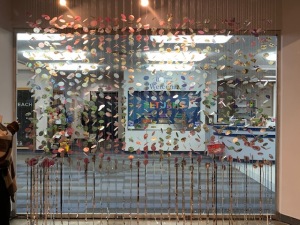



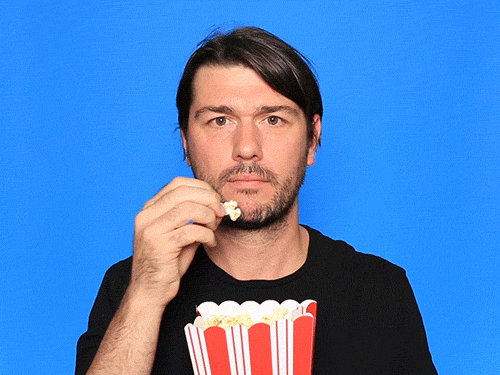
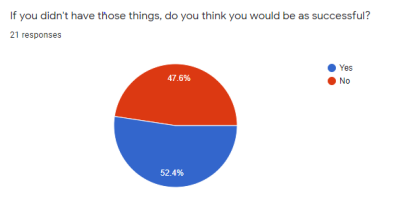
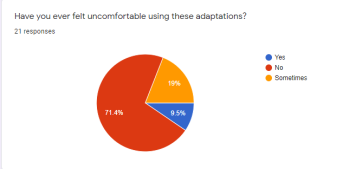 Looking into this theory, his comments backed up what I thought might be the case – if you have a classroom of students with average ability and only a couple students requiring adaptation, it can be an isolating experience even though they require it. Often times too, students don’t have the language skills to explain why they need the adaptation and it makes them feel worse. I know this student doesn’t want to share about his dyslexia so I always just say, “M needs this the same way you need ______. Don’t worry about it. I will make sure you always have what you need.” (glasses, your computer, a pencil grip, etc.) My next goal is to sit down with the 28.5% of kids who responded “yes” or “sometimes” and see what made them feel uncomfortable that they were unable to share in the survey.
Looking into this theory, his comments backed up what I thought might be the case – if you have a classroom of students with average ability and only a couple students requiring adaptation, it can be an isolating experience even though they require it. Often times too, students don’t have the language skills to explain why they need the adaptation and it makes them feel worse. I know this student doesn’t want to share about his dyslexia so I always just say, “M needs this the same way you need ______. Don’t worry about it. I will make sure you always have what you need.” (glasses, your computer, a pencil grip, etc.) My next goal is to sit down with the 28.5% of kids who responded “yes” or “sometimes” and see what made them feel uncomfortable that they were unable to share in the survey.